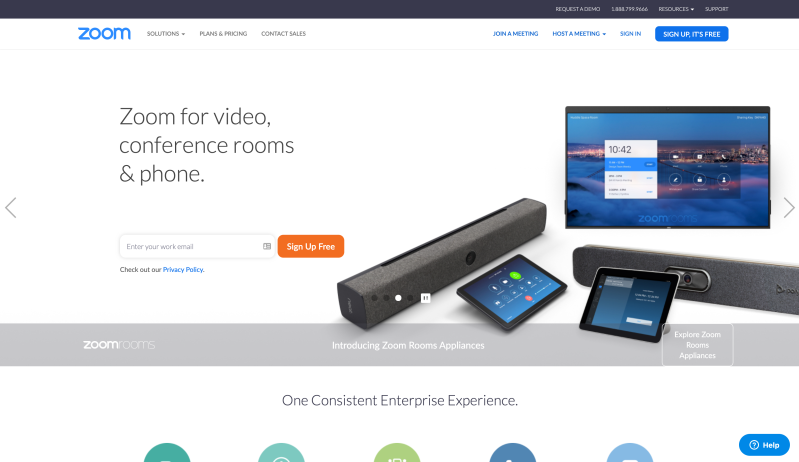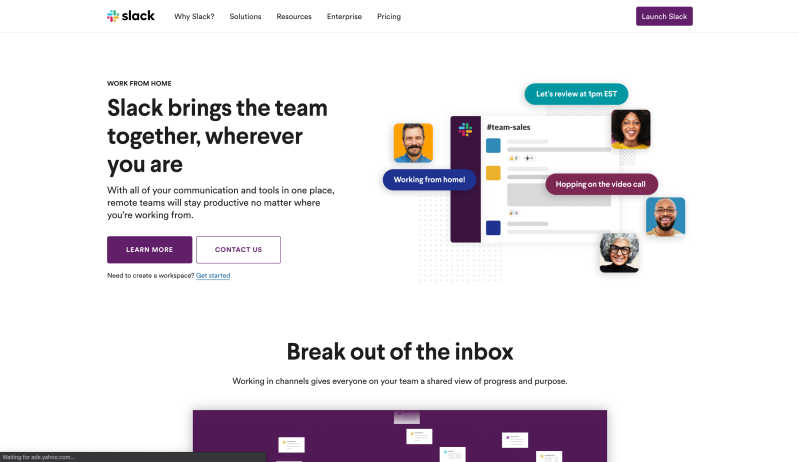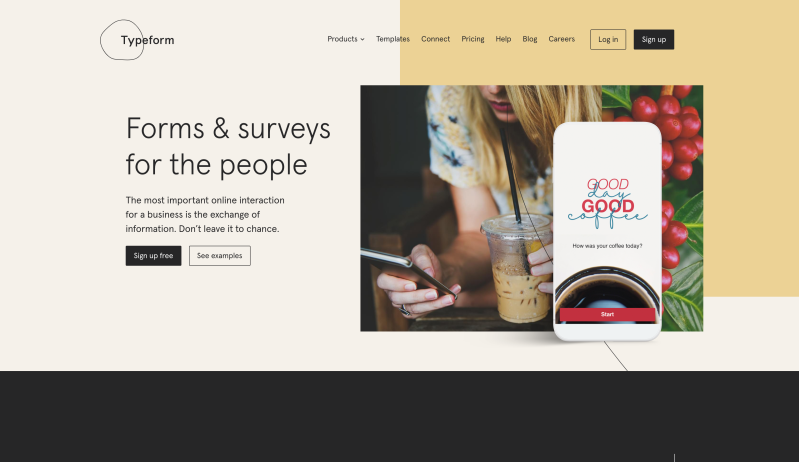
Think of a product team, and you probably think of a tight-knit group of experts working hard to design, build and deliver the best products they can.
Maybe you’re part of a product team.
Maybe you help manage one.
Either way, you’ll know that the success of a product typically depends on the strength of collaboration — the closer the team, the better the end result.
But that’s all changing.
Not the hard-working part.
That’s still true.
It’s the proximity that’s evolving.
Product teams may still be keen collaborators, but more and more often, this working relationship now plays out remotely.
And that’s a massive change if your experience of working in product management has been based around offices for a long time. Indeed, even if you’re brand new to the arena, remote product management might seem a challenge to dive into.
So, we’re here to clear it all up with this, our guide to remote work for product teams.
What is remote work?
Remote work used to be the exception.
Now, it’s fast becoming the norm.
The evolution of remote work
Since 2005, the number of professionals working from home has risen by a massive 140%. More than 4.3 million people across the States do their jobs remotely at least half the time, as part of their standard working routine.
The actual process of working remotely or from home varies from one person to the next. They might rely on a combination of tools for writing documents, hosting video chats, staying updated on projects, tracking time spent on the job, and more.
Alternatively, remote workers could have a simpler setup that involves logging into a business’s proprietary software only.

In any case, remote workers can do their job to the same standard they would if they were based in an office with their colleagues, even in the world of product management. Modern technology makes this easier than ever, with no reason to expect a drop in productivity or quality.
Why are more companies going remote?
There may be certain times when an employee has to work remotely. Perhaps they have to watch their children when they’re unable to go to school one day, or public transport is unavailable due to a strike.
Disruptive world events (such as Covid-19) might cause massive upheaval to established operations, making remote and from-home work the only answer.
Coronavirus and remote work
The coronavirus is putting remote work to a gigantic test and at a totally unprecedented scale. Throughout China, Italy, Japan, and South Korea, workers have been on lockdown. Companies like Amazon, Facebook, Microsoft, and Google all told employees there to remain home.
But there are other good reasons why so many companies actively embrace remote work. Let’s take a closer look.
The benefits of working from home
Increased productivity
Businesses care about productivity — and that makes sense. Employees are being paid for their time, and the more quality work they can deliver within that time, the more value each employee offers.
Remote work and productivity
Remote work has been shown to increase productivity, with almost 80% of employees claiming they’re more productive than if they were based in an office. The same study shows that 24% are willing to put in more hours at home, and 30% achieved more in less time.
So, building a remote product management infrastructure could drive your team to aim higher, be more committed, and unlock their full potential.
Not a bad combination of perks when you need to get a product out to consumers to deadline and universal acclaim, right?
Decreased overheads
Having an on-site team brings obvious overheads. We’re talking about electricity for lighting and hardware. We’re talking about any food, drinks, and vending machines.
We’re talking about licenses, insurance, permits, utilities — all the little essentials that time add up over the years.
And when you switch to remote work, this all changes.
Even with a remote product management team, you could still have an office running with a skeleton crew in other departments or for meeting clients.
Yet allowing employees to work from home can reduce overheads significantly and free up more money to channel into other areas.
Reduced employee turnover
American businesses supporting remote work have 25% less employee turnover than companies that don’t.
Workers who quit a role when a product is in the most crucial stages of design and development can cause delays or even compromise the final result.
But remote work reduces the risk of employees walking away by a whole quarter.
This also helps keep costs down, as the price of hiring new staff members can quickly add up.
Access a wider talent pool
Companies adopting remote product management gain access to a global talent pool.
The traditional hiring model restricts companies to local(ish) candidates only, so businesses cut out a massive demographic of recruits.
But with a remote-first approach, businesses can welcome job applications from all over the world and use various freelancing platforms to find the right qualified, skilled professionals.
Benefits of remote work for employees
And it’s not just companies that benefit from remote working structures, there’s a lot for employees to gain too:
Satisfaction rate for remote employees
More than 80% of American employees agreed that being able to work remotely would make them feel happier in their role. Those who work remotely one or more times each month are 24% more likely to be happy and more productive, too.
And to return to the earlier benefit of reducing employee turnover, 76% of workers would be more willing to remain with their current employer if flexible hours were an option.
Less time wasted on commutes
Very few people enjoy their commute, especially if it means riding a crowded subway or braving gridlock.
Worse still, if you travel from another city for work, you could face long journeys that eat into your personal time — and you’re not even paid for it.
The average one-way commute time in the United States is 26.1 minutes. That all adds up in a week, a month, or a year.
But working remotely gives employees all of this time back. They can sit at their kitchen table or in their home office and log in within moments of finishing breakfast.
Healthier work/life balance
Covid has taught us the importance of employee wellbeing management. The main motivator for employees working from home is a better work-life balance, with 91% of people citing this as their primary reason.

It makes sense.
Employees are in their home environment for longer and miss less of their downtime without lengthy commutes to worry about.
This means more time with the kids after school, a chance to watch TV on their lunch break, and being surrounded by home comforts during the busy working day.
Cons of remote work for companies and employees
While remote product teams enjoy plenty of benefits, it’s not a perfect setup.
And it tends to take a few weeks, if not months, of practice to get into a good rhythm. Here are a few drawbacks that companies and employees might want to think about:
Home may feel intruded upon
Some people might struggle to separate their home and work life when they switch to a remote setup, even just at the beginning.
That’s totally different when you’re going to an office five days a week, where the divide is explicitly clear. As a result, employees may feel as if work is intruding into their personal space.
But in the long run, employees can overcome this by focusing on the personal benefits they enjoy as a result of working from home.
Feelings of isolation
Another common issue for remote workers is feeling isolated from other people, especially if they’re used to being part of a large team.

Others, though, will welcome the chance to spend time in their own company and focus without the distractions of a noisy, active office surrounding them.
Employees concerned about this should schedule regular meetups with friends or family, even if it’s just for a coffee at lunch.
It’s also well worth the team scheduling in daily catch-up calls, checking-in, touching base, and aligning with the goals of the day — a plus for the business and for the mental wellbeing of remote workers everywhere.
Compensating for different time zones
This can be a major hurdle when dealing with people from across the globe.
People working nine to five by their clock is totally different than you doing the same, which causes headaches when scheduling meetings or setting deadlines.

But you have to consider compromising and finding arrangements that are in everyone’s best interests. Don’t allow employees who are the most out of sync to become cut off or out of the loop.
Reduced worker visibility
A decrease in visibility is another con that some employees could feel frustrated by.
They may think that not being on-site means managers won’t notice the amount of work they put in or the quality of their results.
And worse, that they’ll be overlooked when promotions are lurking on the horizon.
Fortunately, the proliferation of project management, communication, and collaboration tools available makes it easier for managers to track employee activities — and to recognize the most valuable members of the team.
Less cohesive company culture
The role of company culture
More than 90% of CEOs and CFOs questioned across North America agreed that company culture was important to their businesses, with over 50% citing it as a key influence on productivity, profitability, creativity, value, and more.
Leaders may fear that building a remote product management team will lead to a fractured culture, leaving employees without a clear sense of purpose, values, or identity. But again, let’s talk about tools.
Video chat, instant messaging, email, project management platforms (Trello, Asana, etc.), and other work-centric tools allow even the smallest businesses to establish a strong company culture for their remote product teams.
Regular video conferences can bring the team together to discuss ideas, vent frustrations, or even just enjoy an informal chat, reinforcing valuable bonds.
The technology’s there. You just need to take advantage of it.
The common challenges of remote work for product management
Product managers may encounter the following challenges when working remotely:
Lack of knowledge sharing and peer-to-peer training
On-site employees can learn from each other daily, even in small ways. They may notice the person they sit next to using a tool in a way they didn’t realize was possible, for example, or hear a colleague explaining a function to another, which helps them understand the product in development a little better.

All of this on-the-go learning and adaptability can be harder to achieve with a remote product management team. But you can address this by pooling employees’ insights and discoveries in a shared folder or project management tool via ‘how-to’ guides and product updates.
Anything and everything that helps the team create a better product.
Overcoming a you-versus-them mindset
Sadly, as a manager, your employees might feel that you are the enemy — even when they’ve never actually met you in person.
It can seem harder to break down barriers when you’re all working remotely. Product managers may seem like little more than a series of demanding emails or critical comments made in a project management tool. That can inspire frustration and, ultimately, resentment.
This is why it’s so important for product managers to incorporate communication tools into standard operations frequently. Be a visible, transparent presence in employees’ daily routines. Make sure they know your “door” is always open if they have questions or issues.
And remember to drop them a line just to say “hi” every now and then. A little kindness goes a long way and helps to really bond the team together.
Gathering user feedback
User feedback is critical to good product management. Remote product teams need to understand where a build needs to be tweaked to deliver a better user experience, whether in its prototype or final form.
But gathering user feedback may seem much more difficult for remote product teams. Fortunately, users can be interviewed through email, video calls, and live chat — individually or in groups — effectively.
Focus groups may be hosted through video conferencing platforms, while questionnaires can be distributed through email to allow for anonymous feedback.
And analytics are widely available to track user behavior and activities. This reveals insights into a product’s usability and success in ways that users may not be able to articulate or even be aware of when completing a form.
Defining issues and resolutions based on user experiences doesn’t have to be a problem with today’s tools.
5 killer tools for remote product management
Product management teams can kick butt and take names with the following tools:
Trello

Trello allows product managers to create custom boards for their team via a user-friendly drag-and-drop interface.
Tasks can be organized into different categories (ideas, to-do, etc.) easily. And comments, images, attachments, and more can be added, too. This keeps every team member updated on tasks, goals, issues, deadlines, etc.
airfocus

airfocus is an innovative roadmapping and prioritization tool which allows remote product managers to create detailed roadmaps. Kanban boarding helps you to keep timelines visual and accessible, with various view options (week, month, etc.) for clarity.
airfocus is ideal for managers looking to assign tasks to individual workers quickly, while stakeholders, developers, sales, marketing, and other groups can all stay updated on a product’s progress. It makes prioritization and tracking easy for even the most complex roadmaps.
Zoom

Want to record videos of a product in action to raise issues or demonstrate the team’s hard work? Zoom lets you do that.
It’s a high-quality screen recording tool that captures video calls, demos, presentations, or anything else on your screen.
Slack

As a product manager, you can use Slack to engage with team members quickly and conveniently without being caught up in confusing email conversations.
Slack affords greater privacy and speed, both of which are crucial at times, connecting teams based all over the world instantly. You can also share various file types such as videos and PDFs.
Slack’s also great for those all-important person-to-person check-ins. How is each of your team members getting on? Do they need any extra assistance? How’s their kid doing at college? All of that crucial team-building work can be done in an instant.
Typeform

Remember when we mentioned gathering user feedback earlier?
Remote product management teams can try Typeform. Create striking surveys and quizzes with eye-catching images or videos to learn more about your core audience in an engaging way. There’s plenty of customization and integrations (Slack, Trello), too.
Conclusion
Remote product management is sure to be a challenge for teams with experience in on-site work or new ones starting from scratch.
But the sheer amount of quality tools available means it’s easier than ever to unite skilled team members from around the world and focus them on priority goals — no matter how many miles stand between them.

Andrei Tiburca

Read also

Experience the new way of doing product management

Experience the new way of doing product management





